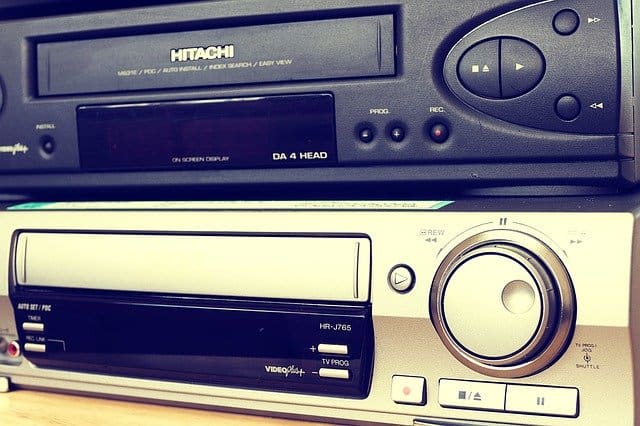The video cassette record (VCR) is a relic of a bygone era. Commercially available beginning in the mid 1970s, it offered people a chance to do something previously not possible: Watch movies on demand without commercials on their schedule rather than relying on what the tv networks were showing or what was in movie theaters at the time.
The VCR technology that was most common was the VHS (Video Home Service) format which was a larger cassette tape than the less popular Betamax format.
But both cassette tapes were just that: A tape made of plastic that like the much smaller audio cassette tapes, could easily be damaged and ruined through misuse.
While primitive by today’s standards the VCR was a great leap forward in terms of entertainment and put the power in the hands of the consumer. It played videos and enabled you to record them too. But it had a few quirks that many (most?) VCR owners never bothered to learn about because chances are, they never needed to.
One such quirk? The dew indicator. It was typically a small red light that could illuminate and would prevent you from using the VCR.
But why does the dew indicator exist and what can you do when it lights up?
What is the purpose of a dew indicator on a VCR?
Like other electronic devices like cameras and camcorders, VCRs are susceptible to moisture to the point where they won’t function properly at a certain level. The dew indicator is triggered when moisture inside the VCR is too high. The machine will shut down until the internal moisture level drops to an acceptable level.
With a VCR, excessive moisture inside the unit can cause the tape of the cassette to stick to the rotating head drum causing damage if not compete failure to the tape and possibly the VCR too. Thus, the dew sensor was designed to shut the machine down to avoid damage when moisture is too high.
When excessive moisture is detected, a red dew indicator light would light up on the front panel of the VCR, depending on the model you own. The VCR would cease to function until the moisture had dropped to an acceptable level. You may also see a blue screen with “DEW” appearing on your tv screen rather than the movie you were trying to play to let you know that the sensor had been triggered.
Where is the dew indicator light located?
Depending on the model, the dew indicator is typically a small red light with the wording “DEW” written above it, typically at the side of front panel of the machine near the Stop, Play, Pause, FF, RW and other control buttons.
The light illuminates when excessive moisture is detected to let you know about the condition.
If you don’t have the light indicator, there is another way your VCR model may let you know you have a moisture problem.
You may also have a model that will display a blue screen with the word “DEW” appearing onscreen when you try to play a VCR tape. This also indicates that the dew sensor has triggered and you will not be allowed to play a cassette until the moisture level has dropped.
The actual dew sensor itself is located inside the machine typically in and around the cassette deck, where the VCR tape sits when being played. It is usually square in shape, about 1cm in size and is commonly gray or black in color.
How can a VCR have excessive moisture inside the unit?
The main ways your VCR will accumulate an excessively high amount of moisture inside the unit are:
The room that the VCR is stored in is excessively humid – An excessively humid environment can activate the dew indicator when the moisture gets inside the VCR.
Solution: Lower the humidity in your home because if the dew sensor is activated, chances are your house humidity level is excessively high.
The VCR was being stored in a cold environment and was moved into a warmer room – If you had the VCR in a cold environment such as your car in winter for a period of time, moving it inside your house to a warmer environment may create condensation as the unit heats. This could trigger the dew indicator.
Solution: Allow the VCR to warm up to room temperature and the situation will tend to sort itself out. Alternatively you can carefully use a hair dryer to dry out the inside of the VCR if you need to use it right away.
Summary
The best way to avoid triggering the dew sensor on your VCR or other electronic device is to keep your electronics in an environment that isn’t humid and is well ventilated.
Moving your VCR from a cold area to room temperature can cause condensation to build up to a point that will activate the dew sensor and prevent you from using the VCR until the moisture has dissipated, typically with time.
Using a hair dryer to heat the inside of the VCR can help to speed up the drying process to deactivate the dew sensor. This should enable you to use the VCR again at that time.


